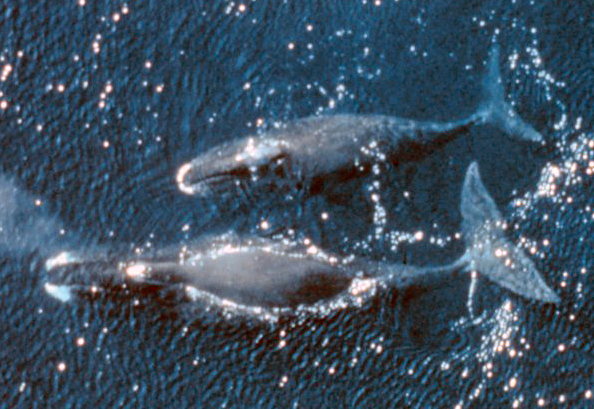Facts About Bowhead whale
The bowhead whale is a remarkable species of baleen whale, part of the family Balaenidae and the sole member of the genus Balaena. These giants of the Arctic and subarctic waters are named for their enormous, triangular skulls, which they use to break through thick Arctic ice. Known for having the largest mouth of any animal and the longest baleen plates, bowhead whales can live for over 200 years, making them one of the longest-lived mammals.
Historically, bowhead whales were heavily hunted by whalers, leading to a significant decline in their populations. Today, some groups of bowhead whales are listed as endangered or vulnerable.
Originally, bowhead whales were classified with right whales, but further research has shown that they are distinct enough to be placed in their own genus, Balaena. Unlike many other whales, bowheads do not have a dorsal fin, an adaptation that helps them navigate under sea ice.
Typically, bowhead whales are either solitary or travel in small groups. They are slow swimmers but can dive for up to an hour at a time. Their diet mainly consists of zooplankton. Breeding takes place between March and August, with females giving birth to a calf every three to four years. Bowhead whales are particularly notable for their incredible longevity, with some individuals living for more than two centuries.
Bowhead whales are unique among baleen whales in that they spend their entire lives in Arctic waters. Their populations are scattered across different regions, each facing varying levels of threat. While commercial whaling once brought them to the brink of extinction, current hunting is limited to subsistence levels by indigenous communities.
To protect these magnificent creatures, a range of conservation efforts have been implemented. The bowhead whale is listed in various conservation agreements, with different population groups recognized with varying levels of endangerment. Globally, the bowhead whale is considered of least concern; however, specific populations are classified as critically endangered, endangered, vulnerable, or conservation-dependent. They are protected under the Endangered Species Act and various international agreements aimed at ensuring their survival and habitat conservation.

 Ukraine
Ukraine